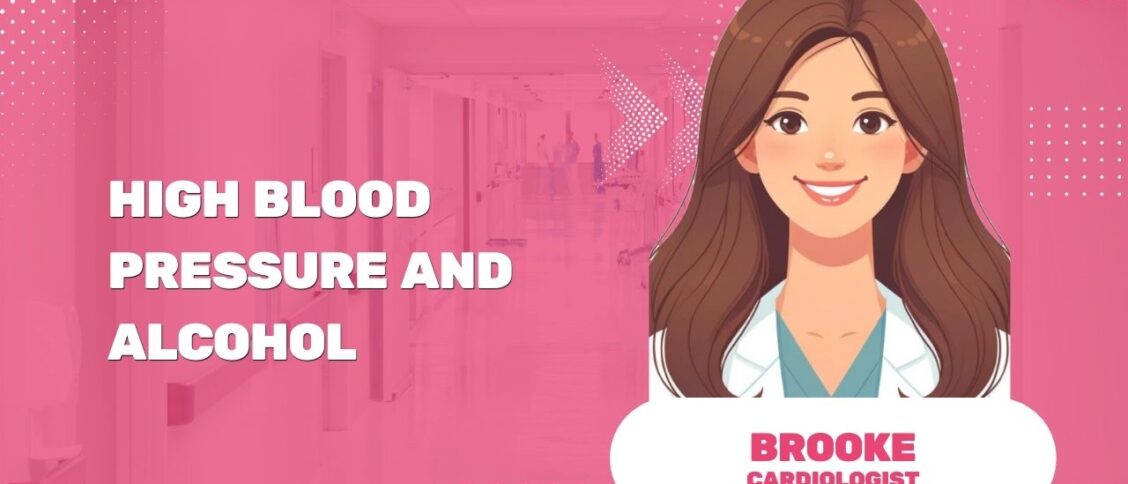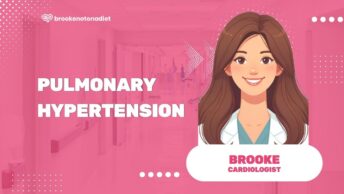Ever wondered how that evening glass of wine affects your blood pressure? I’ve delved into the science behind alcohol’s impact on our cardiovascular system. It’s a topic that’s often misunderstood, but it’s crucial to grasp if you’re keen on maintaining a healthy lifestyle.
In this article, I’ll explore the complex relationship between alcohol and blood pressure. We’ll look at how moderate to heavy drinking can lead to hypertension, and the role of alcohol in heart disease. But it’s not all doom and gloom! We’ll also discuss the potential benefits of moderate alcohol consumption.
So, let’s dive into the world of blood pressure and alcohol. By the end of this piece, you’ll have a clearer understanding of how your Friday night drinks might be affecting your health.
How alcohol affect blood pressure?
As we delve deeper into our discussion about blood pressure and alcohol, it’s crucial to understand exactly how alcohol impacts blood pressure. There’s a bit of science involved, but don’t let that alarm you; I’ll break it down in as simple terms as possible.
Alcohol, particularly when consumed in large quantities, can have significant impacts on your cardiovascular health. It messes with the central nervous system, interrupting normal heart rhythms, and it can also lead to weight gain, which directly influences your blood pressure.
But let’s not get too technical – let’s put this into perspective.
Let me simplify this with a blood pressure chart. Imagine your blood pressure ranges as green (Normal), yellow (Elevated), and red (Hypertension Stage 1 and 2). Now, take into account that every two drinks you consume over the daily recommended limit catapults your blood pressure straight from that safe green zone to the risky red one. In other words, the more you drink, the higher your blood pressure goes.
While most people are aware of these negative effects of alcohol, fewer realize that moderate alcohol consumption may in fact have potential benefits. A glass of red wine, for example, has been linked to a small reduction in heart disease risk in some studies.
However, it’s imperative to understand that this benefit can be realized only under moderate drinking, and doesn’t give us an excuse to overindulge. Drinking alcohol in moderation means up to one drink per day for women and up to two drinks per day for men, as per the dietary guidelines for Americans.
Monitoring your alcohol intake is an essential part of maintaining healthy blood pressure ranges. For measuring blood pressure at home, you may consider investing in a good quality blood pressure monitor.
So, while alcohol can spike your blood pressure, minimizing your intake can steer you towards lower blood pressure and reduce the risk of heart diseases. And don’t forget – regular exercise and a healthy diet are just as important!
In the next section, we’ll explore how you can effectively and efficiently check your blood pressure at home. We’ll also be looking at natural ways to lower blood pressure, such as dietary changes and lifestyle modifications. So, stay tuned for the following segments!
How much alcohol raise blood pressure?
As we delve deeper into the relationship between alcohol and blood pressure, it becomes essential to tackle a crucial question: How much alcohol raises blood pressure? To answer this, we’ll first explore the short-term and long-term effects of alcohol on blood pressure, followed by examining the factors influencing alcohol’s effect on blood pressure.
Short-term Effects of Alcohol on Blood Pressure
When it comes to alcohol consumption and blood pressure, it’s not as simple as looking at a blood pressure chart. Drinking alcohol, especially in excessive quantities, can cause a temporary spike in blood pressure. However, the numbers on the blood pressure monitor can vary depending on the individual’s body reaction and the amount consumed.
To put things into perspective, let’s break down the immediate effects of alcohol into different levels of intake:
- Light Drinking (up to 2 standard drinks per day): Generally doesn’t significantly raise blood pressure.
- Moderate Drinking (3-5 standard drinks per day): May lead to a temporary rise in blood pressure.
- Heavy Drinking (More than 5 drinks per day): Can result in a significant, often acute, increase in blood pressure.
Long-term Effects of Alcohol on Blood Pressure
Unlike the temporary spikes from short-term ingestion, consuming alcohol regularly over a long period may lead to persistent high blood pressure. It can also lead to weight gain, further contributing to elevated blood pressure ranges. So, if you’re looking at lowering blood pressure, reducing alcohol intake is a viable strategy.
Factors Influencing Alcohol’s Effect on Blood Pressure
Surely you’ve wondered, “Why does drinking affect people differently?” That’s because several factors come into play:
- Genetic makeup: Some individuals are genetically predisposed to be more sensitive to alcohol’s effects.
- Body mass: Individuals with higher body mass may exhibit a greater blood pressure response to alcohol.
- Lifestyle habits: Smoking and poor nutritional choices can exacerbate alcohol’s effect on blood pressure.
- Age and gender: Older individuals and men tend to experience greater blood pressure increases.
Controlling these factors along with checking blood pressure regularly can help manage and maintain healthy blood pressure ranges effectively. So, if you’re wondering how much alcohol raises blood pressure, the answer isn’t one-size-fits-all. It’s about knowing your own limits, moderation, and making informed lifestyle choices.
How much of alcohol is too much for high blood pressure?
A common question running in the minds of individuals concerned about high blood pressure is – ‘how much alcohol is too much?’ Well, this isn’t as straightforward as it might seem, largely because alcohol affects people differently.
The American Heart Association (AHA) recommends that if you drink, it’d be best to do so in moderation. But what does ‘moderation’ imply?
For men, moderation means up to one or two standard drinks a day, while for women and light-weight people, it’s limited to only one standard drink per day.
But remember, these numbers are not targets to aim for. Instead, they represent limits that you shouldn’t cross to ensure you’re not adversely affecting your blood pressure. What’s more, even these recommended limits might be too much for some people, especially those who are more sensitive to alcohol’s effects.
This table will help you identify an average serving that constitutes a single ‘standard drink.’
| Beverage | Standard serving size | Alcohol content |
|---|---|---|
| Beer | 14 ounces (360ml) | About 5 |
| Wine | 5 ounces (150ml) | About 12 |
| Spirits (gin, vodka, whiskey) | 1.5 ounces (45ml) | About 40 |
Staying within these limits will help in maintaining healthy blood pressure ranges. Also, note that binge drinking (consuming 4 or more drinks within 2 hours) can cause your blood pressure to spike, even if it’s an infrequent event.
Now that we’ve understood how much alcohol can affect your blood pressure, it’s also essential to look at various methods for checking blood pressure regularly. A good quality blood pressure monitor can become your ally in this. Regular monitoring helps detect any anomalies early, making management and lowering blood pressure quickly achievable.
Finally, keep in mind that moderation also implies taking days off from consuming alcohol. Drinking daily, even within these guidelines, could lead to other health problems, including alcohol dependency.
How to drink alcohol with high blood pressure?
Drinking alcohol can be tricky when you’re watching your blood pressure. Worry not, as I’m here to provide you simple, actionable tips that can help balance your love for a good pint and your health.
1. Know Your Limits
The first step to drinking alcohol with high blood pressure is knowing your limits. Light to moderate drinking typically doesn’t raise blood pressure significantly. However, heavy drinking can trigger a substantial rise.
For men, experts recommend up to one or two standard drinks a day. For women and lightweight individuals, the recommendation drops to one standard drink per day. Stick to these boundaries, and your blood pressure should remain within the healthy range.
2. Monitor Your Blood Pressure
Regularly checking your blood pressure is a must. It’s an early warning system that can tip you off if your drinking habits are starting to affect your blood pressure. Fortunately, home blood pressure monitors can make consistent monitoring a breeze.
3. Lower Your Blood Pressure
Apart from mindful drinking, engage in activities known to lower blood pressure, such as regular exercise, maintaining a healthy weight, and eating a balanced, low-sodium diet. These habits can counterbalance the possible negative effects of alcohol on your blood pressure.
4. Take Alcohol-Free Days
Aim to have several alcohol-free days every week. These breaks can help prevent your body from becoming accustomed to alcohol, reducing the risk of blood pressure-related health problems.
And there you have it: a few strategies to help you enjoy your favorite libations without neglecting your blood pressure. Always remember the importance of moderation and staying informed about your health.
What is the best and worst alcohol for high blood pressure?
When it comes to blood pressure and alcohol, it’s essential to not only know your limits but also what type of alcohol you’re consuming. So, let’s dive deeper into this discussion and figure out which forms of alcohol can be less problematic and which ones to steer clear from if you’re dealing with high blood pressure.
Is Wine Bad for Blood Pressure?
A burning question many people have is whether or not wine, particularly red wine, is bad for blood pressure. The answer isn’t as straightforward as you might hope.
Red wine, in moderation, is thought to have heart-healthy benefits thanks to its high levels of a type of antioxidant called polyphenols. There’s also a certain component present in red wine known as resveratrol which is said to offer heart health benefits.
However, despite these potential benefits, excess consumption can counteract these positives, leading to raised blood pressure levels. Please keep in mind the keyword here: moderation.
Here’s a quick overview for you to understand better:
| Alcohol Type | Effect on Blood Pressure |
|---|---|
| Red wine (moderate) | Can potentially have heart health benefits |
| Red wine (excessive) | Can lead to raised blood pressure |
Sticking with the recommended alcohol limits is the key when you’re trying to balance high blood pressure and alcohol consumption. As per the American Heart Association, this translates to up to one drink per day for women and up to two drinks a day for men.
And if you’re wondering what checking your blood pressure might look like, you typically use a blood pressure monitor to see where you fall within a blood pressure chart. This chart has various blood pressure ranges labeled from low to high extremes.
Remember, regular monitoring can serve as an early warning system for any negative effects of alcohol on your blood pressure. Taking alcohol-free days is also advised to reduce the risk of blood pressure-related health problems.
In the next section, we’ll continue discussing different types of alcohol, focusing especially on spirits and beer and their relation to blood pressure. We’ll also talk about activities that can aid in lowering blood pressure. Together, we’ll explore how to effectively navigate between enjoying your glass of alcohol and maintaining your health.
What are the dangers of mixing alcohol with blood pressure medications
Let’s get down to another vital topic – the risk of combining alcohol with blood pressure medications. Many become curious, or worse, ignorant about the potential dangers that lurk in this dangerous cocktail. Knowing these risks can prevent future complications and maintain a healthier lifestyle.
My advice would always be to consult with your doctor before consuming alcohol while on blood pressure medications. They know best and can give you personalized guidance based on your current health status.
There are a range of blood pressure medications available, each with its own potential risks when mixed with alcohol:
- Beta blockers: These slow the heart rate and lessen the force of the heart’s contractions. If mixed with alcohol, beta blockers can lead to an unsafe drop in blood pressure or an increase in alcohol-induced dizziness.
- Diuretics: Used to eliminate excess sodium and water. When mixed with alcohol, their effectiveness is reduced, which can lead to a spike in blood pressure.
Will quiting alcohol lower blood pressure?
There’s a query that’s been brewing in the minds of those who frequently enjoy their glass of red wine but struggle with hypertension: “Will quitting alcohol lower my blood pressure?” Let’s delve into this question, examining the relationship between the cessation of alcohol and altering levels of blood pressure.
Firstly, How Alcohol Impacts Blood Pressure
Research has shown that alcohol can directly impact blood pressure ranges. Excessive drinking can lead to an array of health problems, including chronic hypertension or high blood pressure. The American Heart Association suggests that alcohol should be consumed in moderate amounts – that is, up to one drink per day for women and two for men.
How Quitting Alcohol Affects Blood Pressure
Studies suggest that quitting alcohol can contribute to lowering blood pressure, especially for heavy drinkers. It’s crucial to work with your doctor or healthcare provider when considering any major lifestyle changes.
To give you a clearer picture of how blood pressure ranges can be influenced by quitting alcohol, let’s take a look at the following data:
| Status | Systolic Pressure (mm Hg) | Diastolic Pressure (mm Hg) |
|---|---|---|
| Heavy Drinker | 160 | 100 |
| After Quitting Alcohol (1 month) | 145 | 90 |
| After Quitting Alcohol (6 months) | 130 | 80 |
This table represents a hypothetical situation and the decrease in blood pressure may vary from person to person. However, it clearly shows that there can indeed be beneficial effects of quitting alcohol on blood pressure.
The journey to heath doesn’t just stop at quitting alcohol. A well-rounded approach to reducing blood pressure includes:
- Regular physical activity
- A balanced diet rich in fruits, vegetables, and whole grains
- Limiting sodium intake
- Using a reliable blood pressure monitor for regular checks at home
It’s also vital to remember each person’s body responds differently to changes. Hence, it’s recommended to take a personalized approach when it comes to managing your health. Always consult with health professionals and monitor changes closely using tools like a reliable blood pressure monitor. This helps to ensure you’re keeping within the safe and healthy blood pressure ranges.
How to lower blood pressure?
Lowering one’s blood pressure isn’t as tricky as it might initially sound. There are a variety of steps you can take to help guide your blood pressure levels back towards those ideal ranges seen on a typical blood pressure chart. The importance here is to understand that consistency is key—changes won’t happen overnight, but with determination and patience, they’ll come.
Regular Physical Activity
Physical activity is the cornerstone of healthy living and it absolutely affects your blood pressure. Most healthcare professionals suggest aiming for at least 150 minutes of moderate aerobic activity or 75 minutes of vigorous activity every week.
This could be broken down into a variety of exercises including:
- Brisk walks or running
- Cycling
- Swimming
- Dancing
- Household chores
Importantly, it’s not about becoming the next champion athlete—it’s about raising your heart rate and getting moving regularly.
Optimizing Your Diet
In addition to physical activity, what you eat has a significant effect on your blood pressure. What should a blood pressure-lowering diet look like?
- High in fruits and vegetables
- Low in saturated fats
- No more than moderate levels of alcohol
- Balanced with lean proteins
- Low in sodium and added sugars
Just remember that portion control is equally important as the balance of nutrients. Eating healthy foods in excessive amounts won’t bring about the desired changes.
Monitoring Your Blood Pressure
Once you’ve started making lifestyle changes, you need to keep track of their effects. A blood pressure monitor is a key tool here. Measurement consistency is crucial—be it daily, weekly, or bi-monthly checks. Logging these readings will provide you with tangible data to assess progress and make necessary adjustments.
Medication
It may be necessary to use blood pressure-lowering medication alongside lifestyle changes, especially if your levels are significantly high. Always consult with a healthcare professional before starting or changing medication.
In sum, lowering your blood pressure involves a combination of regular physical activity, a balanced diet, attentive monitoring, and potentially medication. Your healthcare provider plays an integral role in this process, guiding and supporting you through these changes. We’ll delve further into each of these components in the following sections, so keep scrolling for more in-depth information.
How to use blood pressure monitor?
In our journey to understand the relationship between blood pressure and alcohol, we’ve come to one essential tool—your blood pressure monitor. With a monitor, you’re gaining control of checking your blood pressure at home; an empowering step towards excellent health. But, which blood pressure monitor is the best? Let’s break it down.
Which Blood Pressure Monitor is the Best?
When it comes to choosing the best blood pressure monitor, accuracy, ease of use, and overall value are significant aspects to consider. Here are a few highly rated options:
- Omron Platinum Blood Pressure Monitor: This model is known for its advanced accuracy. It’s also user-friendly and comes with various features including a multiple-user mode for up to two users.
- Withings BPM Connect: If you’re into smart technology, this might be the choice for you. It syncs with an app on your smartphone and keeps track of all your readings over time.
- Greater Goods Blood Pressure Monitor Cuff Kit: For a budget-friendly option, this one rings true. It’s straightforward to use and provides reliable results.
| Blood Pressure Monitor | Feature |
|---|---|
| Omron Platinum Blood Pressure Monitor | User-friendly, advanced accuracy |
| Withings BPM Connect | Syncs with smartphone |
| Greater Goods Blood Pressure Monitor Cuff Kit | Budget-friendly, Easy to use |
After selecting the right monitor, understanding the blood pressure chart and the importance of the readings is the next step.
Understanding Blood Pressure Chart
When you’re checking your blood pressure, the numbers matter. But what do they mean?
- Normal range: Below 80 mm Hg diastolic and Below 120 mm Hg systolic
- Elevated: 80-89 mm Hg diastolic and 120-129 mm Hg systolic
- Hypertension stage 1: 80-89 mm Hg diastolic and 130-139 mm Hg systolic
- Hypertension stage 2: 90 mm Hg or higher diastolic and 140 mm Hg or higher systolic
Final words
So there you have it. Lowering blood pressure isn’t an overnight process, but with the right approach, it’s achievable. Regular exercise and a balanced diet play crucial roles. Monitoring your blood pressure helps you keep track of your progress, and understanding your readings is key. Remember, consistency and patience are your allies in this journey. Keep pushing forward and you’ll see the results you’re aiming for. Stay healthy, and remember to always keep an eye on your blood pressure.







